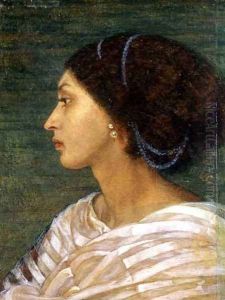Wells Joanna Boyce Paintings
Joanna Mary Wells, née Boyce, also known by her married name as Mrs. Henry Wells, was an English painter associated with the Pre-Raphaelite Brotherhood, born in London on 7 December 1831. Her talent for art was apparent from a young age, and despite the societal limitations placed on women in the arts during the Victorian era, she pursued her passion with determination.
Joanna was the sister of the Pre-Raphaelite painter George Price Boyce, and through him, she became acquainted with other artists of the movement. She trained briefly in Paris before returning to London, where she studied under the drawing master James Mathews Leigh at his Leigh's Academy. She was also influenced by the work of the Pre-Raphaelites, which is evident in her attention to detail and her use of bright colors.
In 1855, Joanna Boyce married the painter Henry Tanworth Wells, but she continued to focus on her artistic career after her marriage. Her work was well received, and she exhibited at the Royal Academy and other venues. Her subjects included portraits, figure studies, and historical scenes. Some of her notable works include 'Elgiva' (exhibited at the Royal Academy in 1855), 'The Boys Crusade' (exhibited in 1860), and 'A Bird of God' (unfinished at the time of her death).
Tragically, Joanna Boyce Wells's life and career were cut short when she died from complications of childbirth on 15 July 1861, at the age of 29. Despite her brief career, she left behind a body of work that has been praised for its beauty and technical skill. Her paintings are considered important in the context of female artists in the 19th century, who often struggled for recognition and opportunity. Today, Joanna Boyce Wells is remembered as a talented artist who made a significant contribution to the art world in her short life.
